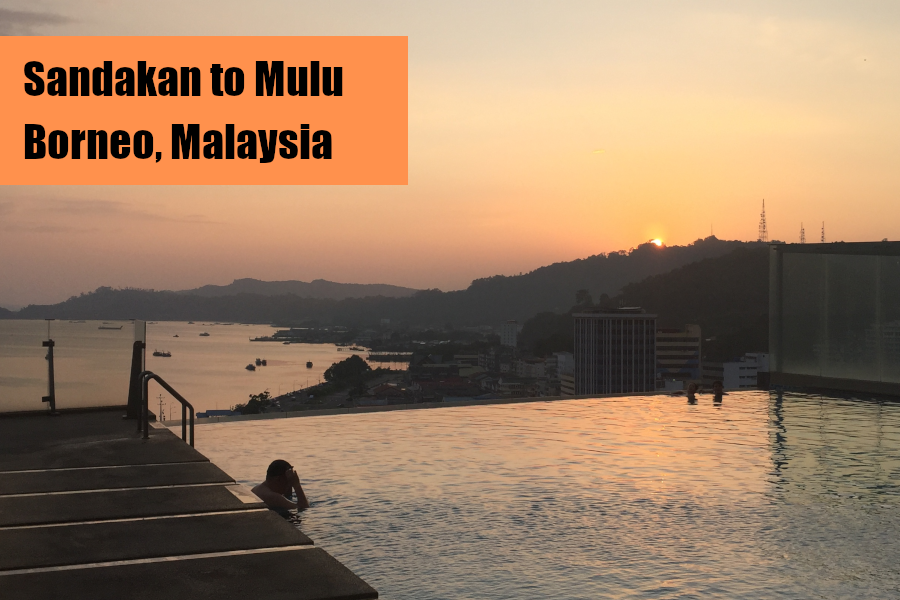After Kuala Lumpur, we made our way to the Scuba Junkie resort on Mabul Island, a tiny island off the south-eastern coast of Sabah in Malaysia. Scuba Diving in Borneo was something we were really looking forward to especially since it would be our first time staying at a true scuba diving resort. We also knew this area was a highly sought after destination for scuba divers due to its proximity to Sipadan Island, which has been frequently named as having one of the top dive sites in the world. Our research showed that Scuba Junkie had a great reputation in the area so we booked a four day, three night package with them. Once we arrived we learned that they are an organization that not only runs an excellent resort on Mabul Island with epic scuba diving, but also supports the local community and does important environmental conservation work. Scuba Junkie has access to dozens of dive sites around eight different islands so the options are extensive.
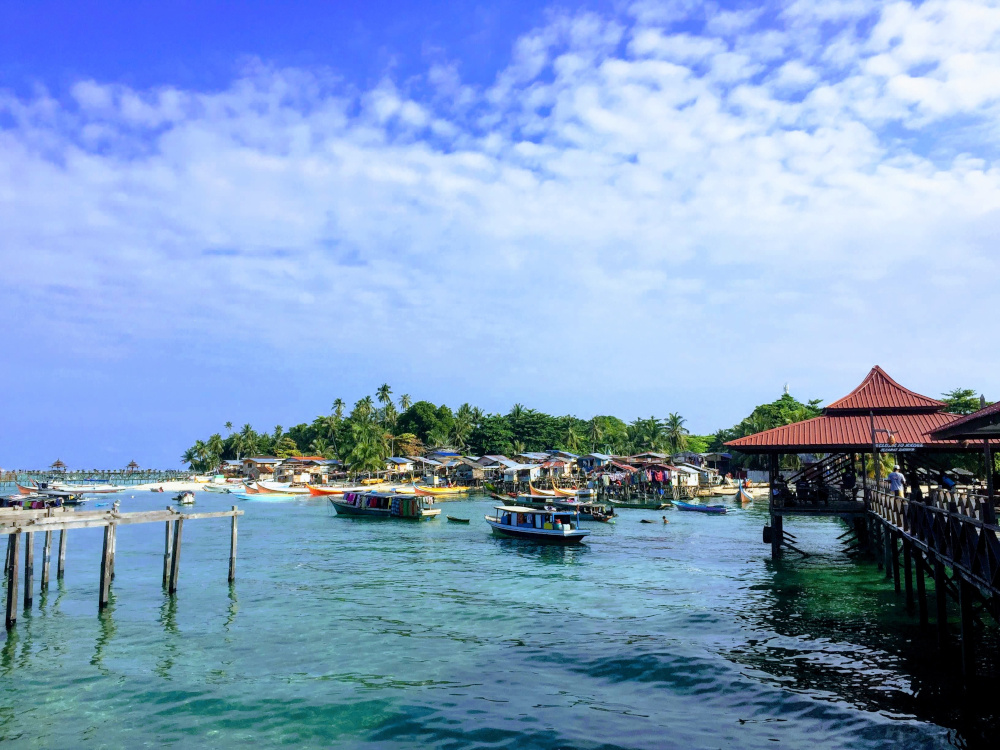
To reach Mabul Island we flew from Kuala Lumpur to Tawau and then took a shuttle van to the town of Semporna where slept in a rather pitiful hotel for the night. In the morning Scuba Junkie transferred us and our luggage by speed boat to Mabul Island, which took about an hour. The boat ride to the island felt like the beginning of a great adventure as we headed away from the mainland out into the sea. About twenty minutes after we arrived at the resort jetty, we were fully outfitted with all our scuba equipment and were on a boat heading out to our first dive of the day.

We did three dives around North Mabul Island on our very first day there. They do not waste any time. It is pretty much dive, eat, sleep, repeat every day. In four days we did twelve dives total. Before we came to Scuba Junkie we had only done fourteen dives over the course of two years or so.
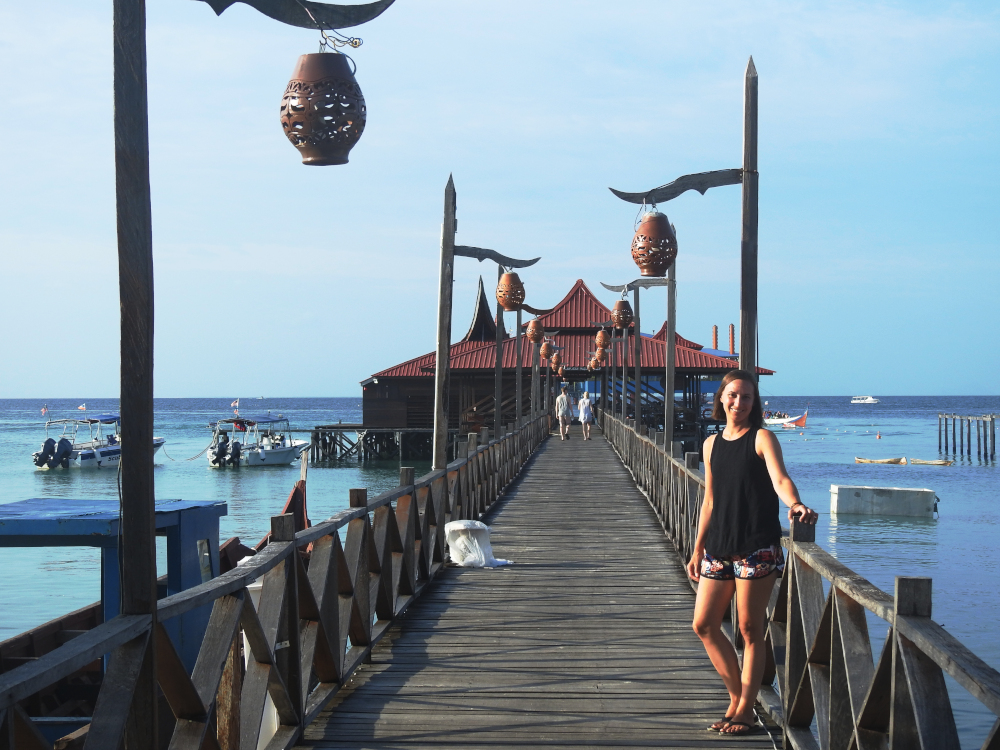
We stayed in a lovely bungalow with air conditioning and a nice outdoor covered porch with a hammock for relaxing in between dives. They also have dorm style accommodations making the resort accessible for a variety of budgets. All meals were included in our package and we were served three buffet-style meals a day plus snacks in between dives. The food overall was good and definitely plentiful. They choose not to support the unsustainable commercial fishing practices in the area so they do not serve any seafood in the restaurant. There are also signs saying fish are friends not food, which makes sense to me for a scuba resort. They do serve meat but always had vegetarian options. There are a few other self-contained resorts on the tiny island but no restaurants anywhere as far as we could tell.

We learned on our first day that we would be diving at Sipadan Island the very next day. This meant we had to be at breakfast at 5:45 am and on the jetty ready to depart at 6:15 am. We joined five other divers and three dive masters plus a boat captain and made our way to Sipadan Island via speed boat. The night before there was a big storm that stirred up the ocean. The hour or so boat trip through choppy waters was a bouncy and wet ride. We felt like we were a world away when we reached Sipadan Island as there was only a ranger’s station, a military outpost, a bathroom facility, and two picnic shelters on the island. Sipadan is special because it is a prehistoric volcano rising 600 meters from the ocean floor and is the only Oceanic island in Malaysia. The waters around it are especially deep meaning they are often visited by quite large varieties of sea life.
Diving at Sipadan Island is highly regulated by the local government and only a set number of permits are issued to dive there each day. This made for a pleasantly uncrowded diving experience. We only saw two other small groups of divers on the island while we were there.
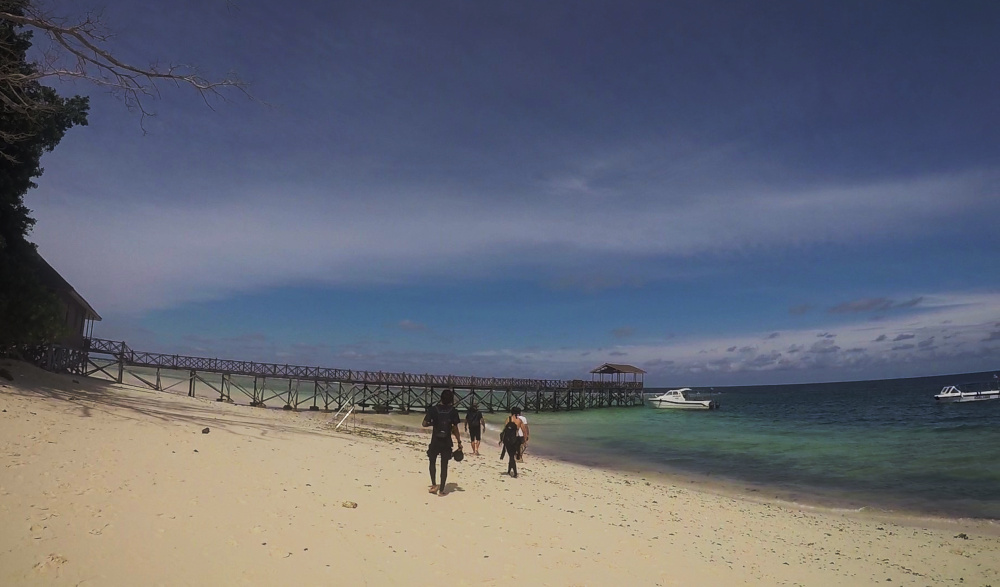
After a thorough safety meeting and dive briefing we took the boat to our first dive site of the day, which was Barracuda Point. Our dive master enthusiastically told us numerous times that Barracuda Point is the number one dive site in the world. I did look this up afterward and it apparently is true according to some lists but it is almost always listed in the top five. As we descended it felt like we had entered an aquarium. There were so many schools of fish it was unbelievable. The visibility was not the best (probably due to the previous night’s storm) but it was an amazing diving experience.

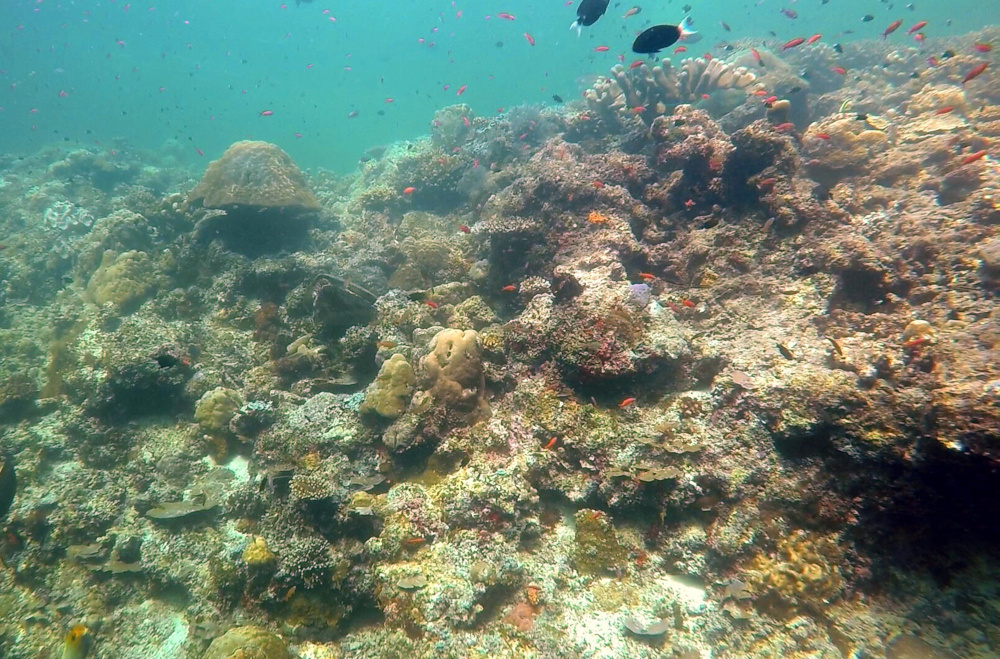
We did four dives total at Sipadan Island, the most dives we have ever done in one day. Due to the weather conditions (mostly strong winds) we visited three different dives sites, including one dive at Drop Off and Hanging Garden and two and a half dives at Barracuda Point (we ended one dive there that started at another site). We enjoyed relaxing in between dives on the island, including a nice lunch break.
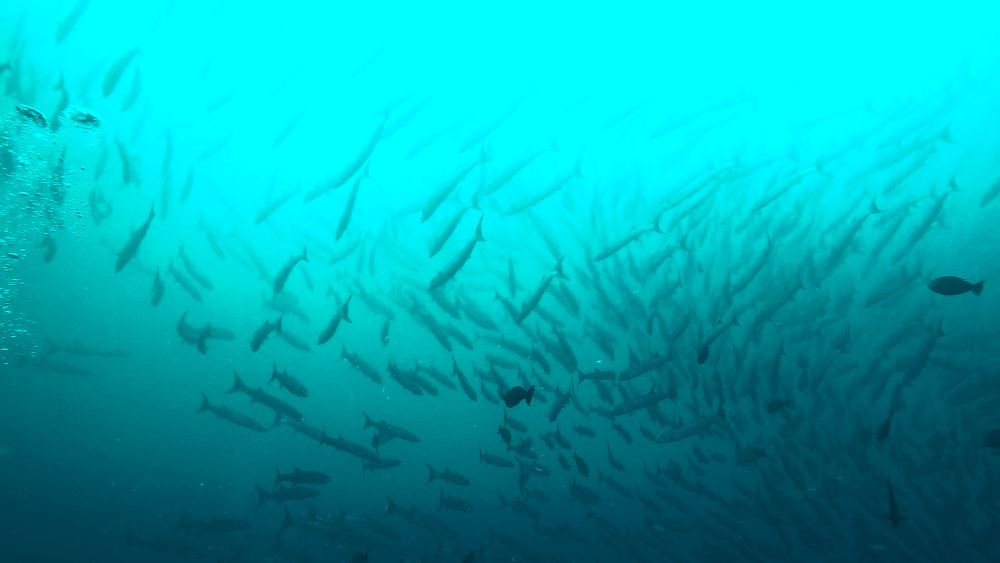

Some diving highlights included seeing a school of huge bumphead parrotfish, hundreds of barracuda, and countless sharks and turtles. There were strong currents in many spots so we had to swim hard much of the time and were pretty exhausted by the end of the day. Above and below are some photos of our diving at Sipadan Island. As a newbie diver I almost did not feel worthy of visiting this world renowned dive site but we are extremely grateful for the opportunity to dive here.
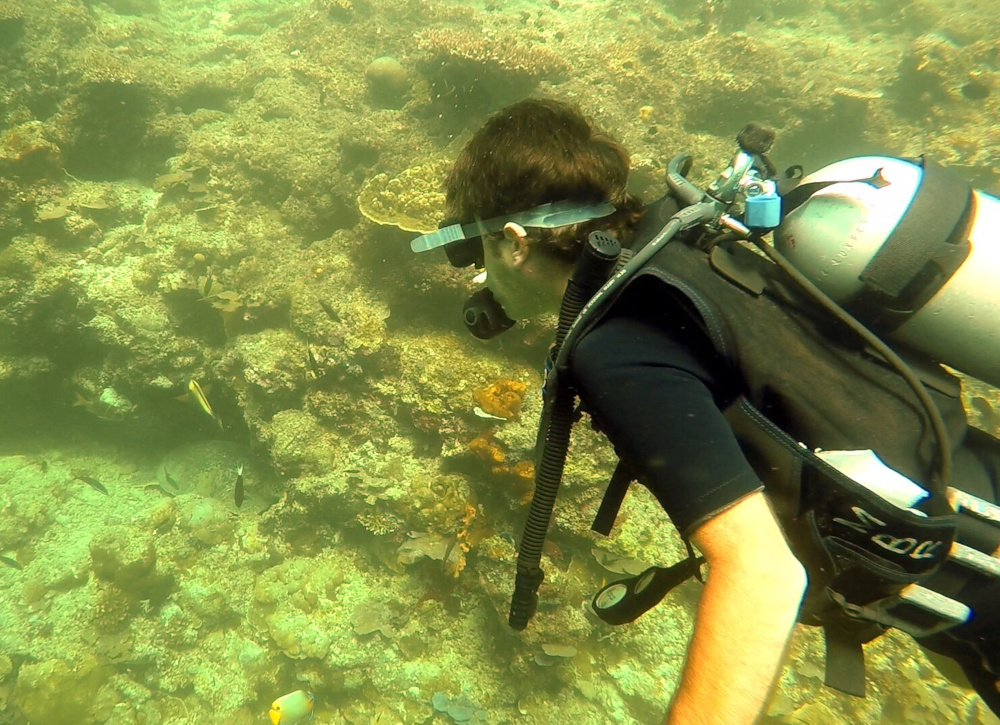

Our third day at the resort consisted of diving at two dive sites around neighboring Kapalai Island, which were wonderful. The boat ride out to the sites was rather wild and we wore our masks on the boat because there was so much water flying in our faces the whole time. At one point one of the guides even grabbed a regulator to breathe through while on the boat, the splashing was that intense.

Our third dive site of the day was near the resort jetty and it was honestly not great due to poor visibility and a good bit of litter in the water. There was another big storm overnight on our second night on the island and that stirred the ocean up quite a bit, especially near the land. On our last day at Scuba Junkie we did two dives around North Mabul Island that were great fun and we also set a new record for our longest dive time to date of 56 minutes.


Before coming to Scuba Junkie we were completely unaware that the resort is owned by marine biologists. They are big advocates for environmental conservation and operate the Mabul Turtle Hatchery which is next door to the resort where we stayed. They have a program where they pay local people a finder’s fee of 1,000 Malaysian Ringgit, which is equal to about $236 USD and is a large sum of money in this part of the world, if they locate a turtle egg nest and report the location to the hatchery. The hatchery then relocates the eggs to their facility until they hatch and the baby turtles are then released into the ocean. The program effectively makes local islanders turtle protection rangers. Without this program in place the endangered green turtle eggs would most likely be harvested as food by humans.
A group of turtle eggs happened to hatch while we were at Scuba Junkie so we had the opportunity to watch them be released into the ocean. The baby turtles were adorable as they made their way into the ocean as we all cheered them on. It was really cool to see these creatures as babies just starting out after seeing so many of the full grown turtles living happily in the ocean.
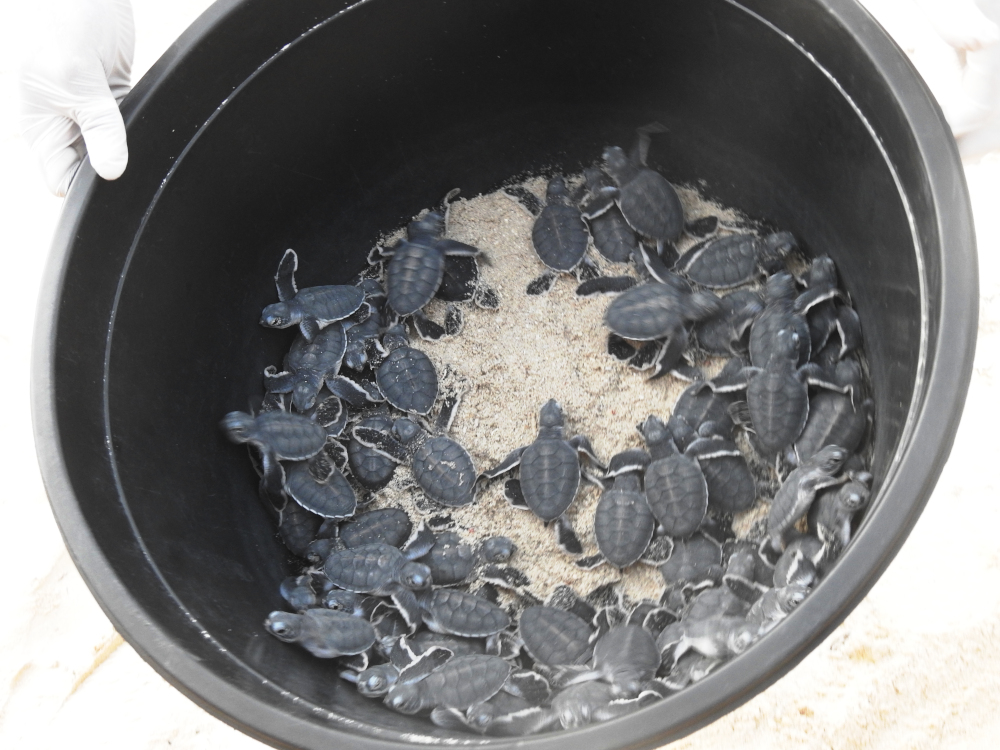
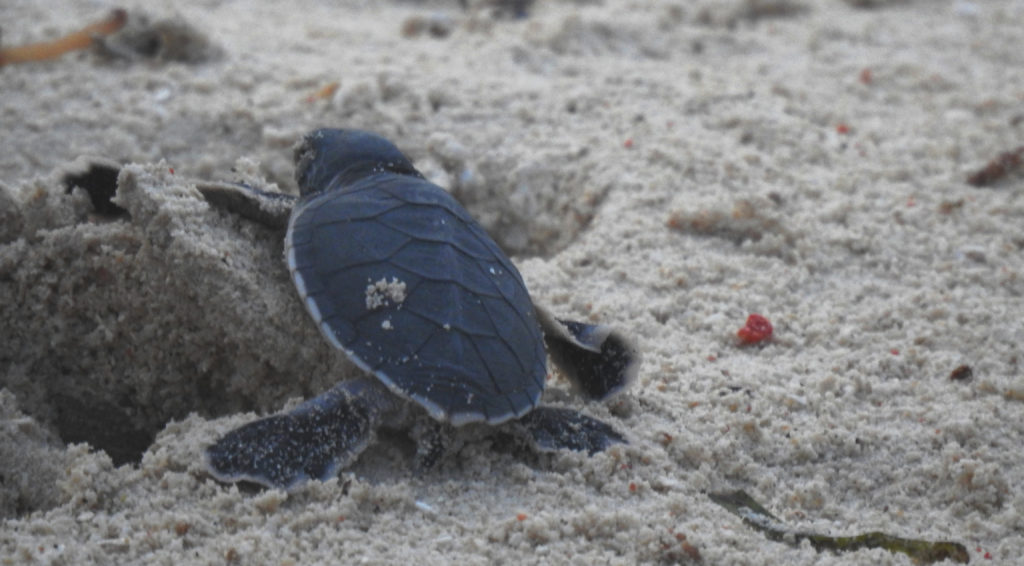
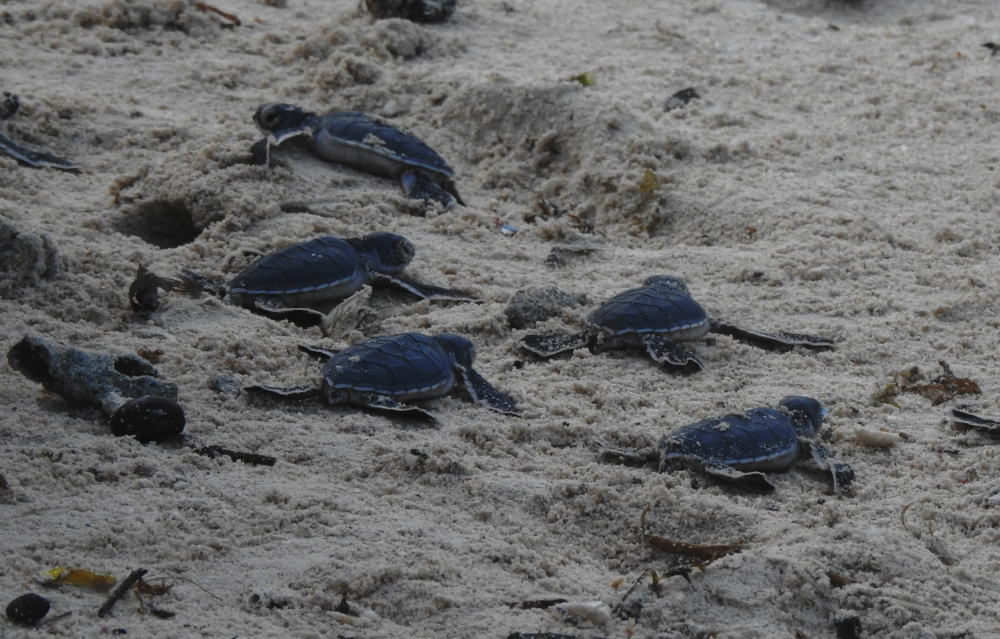
Scuba Junkie also works hard to address pollution in the ocean, mainly plastics. Plastic debris from other islands washes up to Mabul Island daily. Scuba Junkie has installed nets along their jetty to capture and remove the debris from the ocean almost daily rather than letting it float on by. There is a good amount of litter in the water directly around the island unfortunately but they have cleanups constantly to collect it and dispose of it. We also saw quite a bit of litter in the open water between Mabul and Semporna. Scuba Junkie has weekly reef and beach cleanups and manage and pay for trash removal from the neighboring village. They use as few plastic products as possible and have refillable water bottles available to purchase for any guests who may not have brought their own to avoid single-use plastics. Drinking water is readily available at bottle refill stations throughout the resort.
Another interesting thing about Scuba Junkie is that right next door to the resort is a Bajau Laut community. The Bajau Laut are known as ‘Sea Gypsies’ due to their nomadic, seafaring way of life. Some families live on boats or stilt houses built above the water. They have a deep connection to the sea but due to being stateless people they face many challenges, including lack of access to any formal education for children. The adults usually don’t possess formal identity cards so do not have any Malaysian citizenship. Scuba Junkie supports a local school for the Bajau Laut children located on Mabul Island beside their village. You can read more about the Sea Gypsies here.
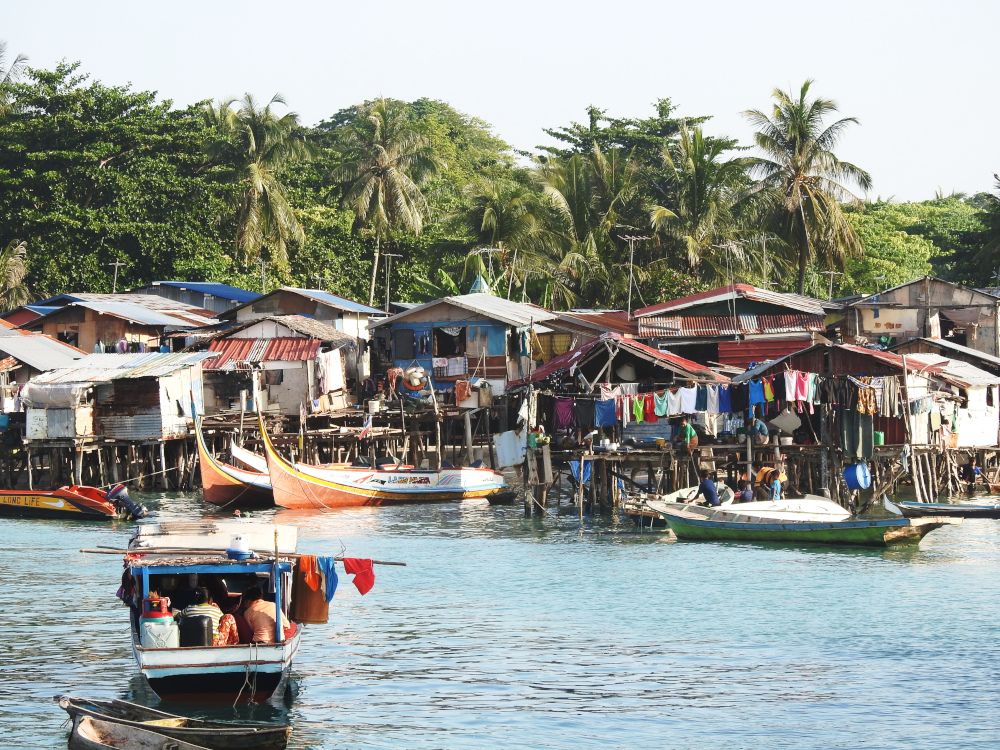
Interesting tidbit: this Blue Planet II segment of clownfish moving a coconut shell to build a nest in the ocean was filmed right near Scuba Junkie. It took two weeks of diving pretty much all day for the videographer to capture the footage. I am so glad we traveled to this part of Borneo in Malaysia and had the chance to experience such incredible scuba diving. I feel like I am a much better diver after my time there. The resort was small enough that we easily got to know some of the other divers visiting from all over the world which was fun. It was a truly unique island adventure from start to finish and Scuba Junkie runs a fantastic resort and diving company.


